Manila Itinerary 2 Days: Culture, History & Food
Most first-time visitors to the Philippines, fly in and out of Manila as fast as they can. Their primary goal is to immediately get to one of the country’s beautiful islands. Unfortunately, they see nothing of the country’s capital. That’s too bad because Manila deserves at least 1 or 2 full days of exploration for the culture seeker, history buff, and food lover. In this Manila itinerary, I’m going to help you uncover all the best parts of this fascinating destination. It includes food tours, visits to quirky cemeteries, and a deep dive into the history of this amazing country.
If you’re interested in learning how to get around Manila, you can read about my experience and tips for getting around this city.
Disclosure: This post may contain affiliate links. As an Amazon Associate and a Bookshop.org Associate, I earn from qualifying purchases. Please see this website's Disclosure for more info.
In This Manila Post, You’ll Find…
(Just jump to the section you want to know more about!)
About Manila
To understand what you’re seeing and what I’m talking about, it’s a good idea to get an overall understanding of the geography and history of the city.
Metropolitan Manila is made up of 16 cities. The most important of these 16 is the city of Manila itself. As of 2022, it’s the most densely populated city in the world.
The city of Manila encompasses the following areas (look at the above map for these areas):
- Intramuros– the oldest part of Manila; it was where the Spanish first settled when they colonized the Philippines; You’ll spend the morning of day 1 in Intramuros
- Ermita and Malate – older and grittier area; some hotels and hostels here
- Binondo and Santa Cruz – Chinatown; On the first day of this itinerary, you can go on a YUMMY food tour in Binondo. On your second day in Manila, you can visit the fascinating Chinese cemetery.
Along with the city of Manila, other important cities or areas for tourists are the following:
- Pasay – the airport and bus station are located here; for info on getting to and from the airport, check out this article on getting around Manila
- Makati – business center; has some great hotels and hostels; great restaurants and bars; safer than other parts of the city; You’ll find some great places to stay in Makati; On day 2 of this Manila itinerary, I have a fabulous evening walking tour of Makati that you don’t want to miss
- Bonifacio Global City (BGC) – it’s actually not a city, but part of Taguig City; it’s newer and safer than other parts; lots of shopping malls
Manila Itinerary: Day 1
The first day of this Manila itinerary is spent exploring the history of the Philippines with a tour of Intramuros, the oldest part of Manila.
In the afternoon, you’ll go on a food tour of Chinatown, where you can dig deeply into the food of Manila and the history and culture of one of the most important ethnic groups in the Philippines, the Chinese.
Day 1 Morning: Intramuros
I highly recommend starting day 1 with a walking or bike tour of Intramuros, the oldest and most interesting part of the city. These kinds of tours usually give you lots of interesting background on the history of the city.
I took my walking tour with Tralulu Tour Company. through my hotel/hostel, Lub d Philippines Makati. This company doesn’t exist anymore.
However, if you don’t want to spend the money on a tour, you can follow my suggested Manila itinerary below. This is almost EXACTLY what I did on my walking tour.
Pro Tour Tips: Here’s a list of the most highly rated tours of Intramuros through Klook, Get Your Guide, and Viator.
- Walls of This Content Intramuros Tour: An Interactive Walk in Manila –– This highly-rated tour goes to the same places on day 1 of this Manila itinerary and it gets rave reviews! Price: US$23 | Rating: 4.9/5 | Book Your Tour: Klook
- Bamboo Bike Tour – This tour is REALLY popular and has great reviews; you can tour the city on a bicycle made of bamboo! How cool is that? Price: US$18-$19 | Rating: 4.8/5 | Book Your Tour: Get Your Guide
- Manila Old & New Tour – Another highly-rated tour of Manila that goes beyond Intramuros and takes you to the Manila American Cemetery and the waterfront. Price: US$60 | Rating: 4.5/5 | Book Your Tour: Viator
Intramuros means “city within the walls.” Today the walls are still there. Well, some of the original pre-World War II walls are still there. Much of it was rebuilt.
Intramuros was where the Spaniards first settled when coming to Manila. It was also from Intramuros where they administered the Philippines.
But because of the destruction caused by World War II, many of the Spanish-colonial buildings are reconstructions. The only two original buildings are San Augustin’s Church and a post office.
Here’s where this Manila itinerary stops on the morning of day 1:
- City Hall
- Walls of Intramuros
- San Augustin Church and Museum
- Casa Manila
- Museo de Intramuros
- Manila Cathedral
- Fort Santiago
How to Get from Makati to Intramuros
Most people stay in Makati, so I’ll tell you how to get to Intramuros from that area of Manila.
Grab: it might cost you around 300 to 400 pesos (US$5 – 7) to get to Intramuros from Makati.
Taxi: Another traveler and I negotiated with the driver the price of 300 pesos to get to Intramuros.
Public Transportation This was how my tour guide got us to Intramuros (it’s also how I returned on my own).
- Jeepney: First, we got on a Jeepney at the Petron Station on Buendia Avenue where it intersects with Makati Avenue. Ask the driver if he’s going to Gil Puyat Station (that’s the Light Rail Station). The ride cost me 9 pesos.
- Light Rail: Then we took a Light Rail Train (LRT) to Central Station, which was 5 stops away. You want to get on a train that is going to Roosevelt, which is the train’s last stop. It cost me 20 pesos
To FULLY understand these instructions, you’ll need to read my “Getting Around Manila” post.
Stop #1 on Day 1: City Hall
COST: Free | OPEN: 8:00 am – 5:00 pm | LOCATION: Google Maps
We started our tour of Intramuros with a visit to Manila’s City Hall. Our guide told us some fascinating things about the Philippines’ revolutionary history.
City Hall is a great place to start because its clock tower is a major landmark in Manila. It’s also conveniently located along the route from the LRT station to Intramuros.
On our way to City Hall, we walked by a new park that had once been a market.
My guide, Dennis, was highly enthusiastic about Manila’s mayor, Francisco Domagoso, a 40-something progressive who was trying to create more green spaces for the people of Manila.
The most interesting thing about City Hall was the mural that encircled the room. You can find a similar one inside the Museum of Fine Arts. The mural tells the revolutionary history of the Philippines.
I was struck by how much the government in the Philippines liked to promote its revolutionary past. You’ll find lots of revolutionary monuments in Rizal Park as well (day 2 of my Manila itinerary).
Two things on the mural stood out for me.
1. “KKK” struck me as odd.
In the United States, KKK stands for the Klu Klux Klan, but for Filipinos, the KKK stands for Katipunan.
Led by General Emilio Aguinaldo, the KKK was a secret revolutionary group that was planning to overthrow Spain. Before they were ready to launch it, the Spanish found out and forced them to launch their revolution prematurely.
The KKK and the Spanish fought for over 18 months until a peace treaty was signed forcing Aguinaldo into exile in Hong Kong.
2. The 3 figures in black robes and white hoods
The other part of the mural that grabbed my attention was located over the main door of the assembly room.
There are 3 people dressed in black robes and covered in white hoods. There’s also something around their neck. These three were Spanish priests who were found guilty of being revolutionaries. There was no proof that they were. Their only “crime” was that they advocated for the ordination of Filipinos as Catholic priests.
Under Spanish rule, only Spaniards could be priests as the Spanish friars believed that Filipinos weren’t intelligent enough.
In 1872, 40,000 Spaniards and Filipinos gathered in Luneta Park (Rizal Park) to watch the 3 priests being slowly strangled to death by a large iron screw.
Stop #2 on Day 1: The Walls and Entrance of Intramuros
After the City Hall, we headed over to one of several Intramuros entrances.
The entrance used to be an actual gate, but when the Americans took over in 1898, they turned it into an archway.
Most of the original wall was destroyed at the end of World War II and rebuilt in the 1970s when the Marcos regime renovated Intramuros.
See if you can find the bullet holes in the walls–remnants of World War II.
While the Philippines was under Spain, the real ruler of the country was not the military but the Catholic Church.
The church had total control over local communities: the police, the courts, the schools, taxes, and public health. They could ban anything that they found to be subversive, and they could send to prison anyone they wanted to without trial.
Fearing their loss of power in the Philippines, they vehemently opposed any kind of reforms that would give the Filipinos any kind of power or even equality. This included the one mentioned earlier about Filipinos becoming Catholic priests.
The church kept the Philippines the same for 300 years. No progress or reforms occurred during the 300-year rule by the Spanish clergy.
You can only enter it to attend mass on weekends. But a wedding was going on when I was there a second time, so I did get to take a photo of the interior from the outside. My tour guide said that wealthy Filipinos like to have their weddings at the church.
There’s also a San Augustin Museum, but it was closed for renovation when I was there.
Stop #4 on Day 1: Casa Manila
COST: 75 pesos (US$1.50) OPEN: 9:00 am – 5:00 pm | LOCATION: Google Maps
Across the street from the church is Casa Manila. This tourist sight was my favorite place to visit in Intramuros. When I was on my tour, we only got to see the outside. But I came back the next day to tour the inside.
Imelda Marcos, the wife of the Philippines’ former dictator, Ferdinand Marcos, (she owned 3,000 pairs of shoes) did one good thing and that was to renovate the old Spanish buildings in Intramuros.
Before her project, Intramuros was in awful condition. My guide referred to it as a “garbage dump.”
Casa Manila was one of her pet projects. The building that you see now is a reconstruction, but the furniture and artwork are original.
Stop #5 on Day 1: Museo de Intramuros
COST: Free OPEN: 8:00/9:00 am – 5:00 pm | LOCATION: Google Maps
The next stop was one of Manila’s newest museums, Museo de Intramuros.
Museo de Intramuros displays the religious art created by Filipino artists and craftsmen over the centuries.
Stop #6 on Day 1: Manila Cathedral
COST: Free | LOCATION: Google Maps
The other important structure in Intramuros is Manila Cathedral. Originally built in 1581, the church that stands now is the eighth version.
Manila Cathedral was destroyed again and again by earthquakes and the seventh one in 1945 in the Battle of Manila. The present one was built in 1958.
Stop #7 on Day 1: Fort Santiago
COST: 75 pesos (US$ 1.32) OPEN: 8:00 am/9:00 am – 8:00 pm | LOCATION: Google Maps
End your tour of Intramuros with a visit to the main tourist attraction of Manila—Fort Santiago. This place has a lot of history.
Built in the late 1500s, the fort was used by the Spanish as the main defensive fortress of the city. It was also used as a military barracks and prison.
You’ll find beautifully manicured gardens, fountains, and plazas.
The most famous Filipino historical figure, Jose Rizal, was a “guest” here before his execution in 1896. There’s a shrine and museum commemorating his life. You can also visit the courtroom where he was tried and the cell that he spent his last days in before he was executed.
On the ground, you can also find his last footsteps as he made his way to Luneta Park to be killed.
When the United States took over the Philippines, the fort became the headquarters of the U.S. Army. The Americans also drained the moats around the walls and turned the grounds into a golf course.
Make sure to walk to the far end of the fort to Baluarte de Santa Barbara. The military barracks here were where many Filipino and American POWs were killed by the Japanese during WWII.
Top Tours in Manila
Afternoon of Day 1: Chinatown
The best way to tour the oldest Chinatown in the world is through your stomach. You’ll find hole-in-the-wall gems, restaurants that have been around for decades, fried chicken places that could win in a knockout against the Colonel, and well, just some damn good food.
I did a food tour in the afternoon on the first day of my 2 days in Manila. The company I did my food tour with no longer exists. However, there is another tour of Chinatown that looks very familiar to the one I did and gets good reviews: Manila Food Tour of the World’s Oldest Chinatown. It gets a 5/5 rating and is cheaper than most food tours I’ve been on.
I’m going to explain what I did on my tour. Maybe you can use my itinerary to a DIY food tour.
If you’re hesitant about joining a food tour, don’t be! It was the best thing I did in Manila. I learned so much about the food and culture of the Philippines as well as just having a good time.
If you’re a solo traveler, food tours are a great way to meet people and a way to avoid eating alone.
Discover the Real Manila with These Food Tours
- Food Tour of the World’s Oldest Chinatown – This tour is similar to the one I did when I was in Manila. Price: US$65 | Rating: 5/5 (70+ Reviews) | Book Your Tour: Viator
- Manila Street Food Tour – This tour starts at 3:00 pm and you get to try steamed dumplings, grilled meat on skewers, stews and soups, and more. Price: US$65 | Rating: 5/5 (200+ Reviews) | Book Your Tour: Viator
- Manila Night Market Tour – This tour is more than just food. Venus takes you to the night markets of Manila where you learn how to order food and what to order as well as where to find the best bargains for clothes, bags, jewelry etc. Price: US$63 | Rating: 5/5 | Book Your Tour: Get Your Guide
Binondo is considered Manila’s Chinatown. This area is where you’ll find Chinese businesses, shops, and restaurants.
When the Spaniards first settled in Manila, there were already a few Chinese already living there.
But Spain was not so keen on that, so they forced the Chinese to live across the river from the Spanish part in the area of Binondo. “Binondo” literally means “hilly terrain.” I guess it must have been a hilly area back then. Not anymore. It’s flat as the rest of Manila.
The Fascinating History of the Chinese in Manila
The Spaniards needed the Chinese for their trade and banking as Spanish priests and officials were forbidden from dealing with money.
Yet they feared and looked down upon the Chinese. The Spanish authorities passed discriminatory laws to keep the Chinese in their place. They were forced to live in ghettos, deported for no reason, and taxed at a higher rate.
Eventually, the Spanish allowed them to buy land in the provinces but only after converting to Christianity or marrying a Filipino.
Chinese Community in the Philippines Today
Today the Chinese in the Philippines are probably the most integrated Chinese community in all of Southeast Asia. If you go to Malaysia and Indonesia, the Chinese are a distinct community with lots of financial clout but very little political power and very few rights.
However, in the Philippines, the Chinese are not just the backbone of the business community (7 out of 10 of the wealthiest Filipinos have Chinese ancestry), but many of the most politically powerful are Chinese.
You’ll find that many of the Philippines’ most famous revolutionary heroes like Jose Rizal and Emilio Aguinaldo are of Chinese ancestry.
My guide said that when the older generations of Chinese Filipinos get together, they usually speak the Chinese dialect of Hokkien. However, the younger generation generally uses Filipino or English and identifies first as Filipino and second as Chinese.
I asked the same questions to my Chinese-Malaysian guides in Penang, and they both said that they identified themselves first as Chinese and second as Malaysian.
Stop #8 on Day 1: New Po Heng Lumpia House
OPEN: 7:00 am – 7:00 pm | LOCATION: Google Maps
My guide and I started the afternoon off with a walk down Carvajal Street (Umbrella Street), a narrow covered lane filled with fruit and vegetable sellers and small restaurants.
We stopped by New Po Heng restaurant and had probably the best thing I ate in the Philippines–the lumpia (spring roll).
The only other place I’ve eaten this type of spring roll is in Fujian, China.
It’s NOTHING like any spring roll you have ever probably tried before. Nothing like the deep-fried spring rolls that you get in Chinese restaurants in the West nor is it like the ones you get in Vietnamese restaurants.
The sad thing is that I could not find this type of spring roll in the rest of the Philippines. Every time I ordered lumpia, I got a boring greasy deep-fried spring roll.
Inside the wrap were chopped-up carrots and cabbage, tofu, rice with seaweed and peanuts, and sugar. It looks more like a burrito than a typical spring roll but the outside wrap is not a tortilla. You can squirt some hot sauce or sweet sauce on it.
Eat very carefully or else the roll will fall apart.
This lumpia in Manila’s Chinatown was the best thing I ever ate in the Philippines. It’s sweet, salty, and spicy all in one bite.
Stop #9 on Day 1: Ying Ying Tea House
OPEN: 7:00 am – 2:00 am | LOCATION: Google Maps
The next stop on my Manila food tour was the Ying Ying Tea House. They served dim sum and other Chinese dishes.
It’s very popular with Chinese Filipinos, so it must be good, right?
We had dim sum: Sio Mai, a Japanese sio mai, a dumpling made of tofu skin filled with pork and radish cake. All very delicious.
Stop #10 on Day 1: Fireman’s Eatery – dessert
The last stop was at another Chinatown institution called Fireman’s Café. My guide said that the place is so popular that on weekends the line to get a table goes into the street
Here we had two different kinds of lava bao (‘bao’ means ‘bread’ in Chinese).
Both were sweet and delicious. However, they were a bit messy. I had to eat them very carefully or else the custard would squirt out all over.
One hundred percent of the profits from the Fire Man’s Café goes to support the firefighters of Chinatown. Because the buildings in Chinatown are so close together, it’s easy for one fire in one building to jump to another building.
Long ago the Chinese in Chinatown didn’t trust the Manila municipal government to protect their homes and businesses, so the Chinese financed their fire fighting brigades. They continue to pay for their own firefighting service.
The fire trucks that are financed by the Chinese are purple.
Unfortunately, I’m not sure if this restaurant exists anymore as I can no longer find it on Google Maps. If you can find this place in Manila, let me know in the Comment Section.
Stop #11 on Day 1: Binondo Church
COST: Free | OPEN: 8:45 am – 5:15 pm | LOCATION: Google Maps
Before leaving Chinatown, we stopped at Binondo Church, also known as the Minor Basilica and National Shrine of Saint Lorenzo Ruiz.
The church was built by the Spanish as a reminder to the Chinese that if they wanted to stay, they needed to convert to Catholicism.
Evening on Day 1: Sunset
End your evening in Manila by grabbing a spot near the shore or on the rooftop of a hotel or restaurant to watch the sunset over Manila Bay.
Here are some of the best spots for watching the sun drop below the horizon:
- Manila Baywalk – This promenade along Roxas Blvd has been recently renovated and cleaned up
- SM Mall of Asia by the Bay
-
- The restaurants on the upper level
- The wall behind the amusement park
Looking for more off-the-beaten-path destinations?
Manila Itinerary Day 2
We’ve hit day 2 in Manila. We’ll begin with a tour of the most famous park in the city, Rizal Park, followed by the brilliant Manila Anthropology Museum
The afternoon is a real treat. A tour of the fascinating Chinese cemetery. You’ll need to travel by the Metro to get there, but don’t worry. I’ll explain how to get there. I did it on my own and if I can do it, anyone else can.
Day 2 Morning: Rizal Park & Museums
On day 2 on my visit to Manila, I toured Rizal Park and several museums.
Stop #1 on Day 1: Rizal Park
COST: Free | OPEN: 5:00 am – 9:00 pm | LOCATION: Google Maps
The first place I visited on my second day in Manila was Rizal Park. Located next to Intramuros, the park is a large open rectangular-shaped area of green grass and lots of revolutionary statues.
The park was where the Spanish rulers executed Filipino revolutionaries. The 3 priests from the mural in City Hall and Jose Rizal, the most famous Filipino, were executed here.
My suggestion is to just walk from one end of the park (the Rizal statue) to the opposite end (the Anthropology Museum). I made a few stops at the Rizal Museum (empty and closed) and the Chinese Garden (meh).
Getting from Makati to Rizal Park:
I took a taxi from my hotel in Makati to Rizal Park. After negotiating with the taxi driver’s original price of 500 pesos, another traveler and I got him down to 300 pesos. We took the taxi on a Saturday morning when the streets weren’t like a parking lot.
Rizal Statue:
The park is named after Jose Rizal, the Philippines’ most famous revolutionary hero. His statue sits at the western edge of the park.
Jose Rizal grew up in a wealthy family. He didn’t actually want independence for the Philippines. He only wanted Filipinos to have the same rights as the Spanish. But that was too extreme for Spain and they executed him.
Rizal was a polymath. He was an ophthalmologist, writer, painter, sculptor, poet, playwright, and activist.
He wrote two novels about the plight of Filipinos under the Spanish (Touch Me Not and The Subversive). Both are considered classics of Filipino literature.
Rizal was executed for supposedly leading an uprising against the Spanish. A group of Filipinos were indeed planning an uprising, but Rizal wasn’t involved in it.
He was executed by a firing squad in the same park that bears his name. Sprain created a martyr, becoming an inspiration for many other revolutionaries.
To the left of the statue is the site of the execution of Jose Rizal.
Stop #2 on Day 2: Manila Anthropology Museum
COST: free | OPEN: 10:00 am – 5:00 pm; closed Mondays | LOCATION: Google Maps
At the opposite end of the park is the Anthropology Museum (also known as the National Museum of the Filipino People). You can’t miss it as it’s in a huge white neoclassical building. It reminds me of the buildings in Washington DC.
For those like me who are fascinated by archaeology and history, the first floor is a joy to explore.
The displays are informative with clear and thorough descriptions. You can learn a lot about the history of the Philippines
- You’ll learn about the 2 competing migration theories of the Philippines.
- How and why pottery evolved from earthenware to ceramics.
- The role of the Philippines in the ivory and silver trade.
- There is also a very comprehensive exhibit on the sinking of the San Diego. What was fascinating was seeing how water and time impacted metal versus ceramics.
There isn’t much to see after the first floor except for the exhibits on rice cultivation.
Read More Articles on the Philippines:
Day 2 Afternoon: Chinese Cemetery
After you’ve found somewhere to eat in Intramuros, head to the Chinese Cemetery.
The Cemetery is in Santa Cruz. You’ll need to take the Metro to get there. But not to worry. I’ll explain how to do it below.
Stop #3 on Day 2: Chinese Cemetery
COST: free | OPEN: 9:00 am – 3:00 pm | LOCATION: Google Maps
My guidebook raved about the uniqueness of the Chinese cemetery so I just had to see it. This is where Chinese Filipinos are buried (Filipinos can be buried here as long as they are married to a Chinese person). I’ve never seen a cemetery like this one.
The Chinese cemetery is the second oldest cemetery in the Philippines.
During Spanish colonial times, Spain wouldn’t allow the Chinese to be buried in their Catholic cemeteries, so the Chinese set up their own.
Getting to the Chinese Cemetery:
Take the LTR north to Roosevelt and get off at the Abad Santos station (20 pesos). Then walk for 8 minutes to the South Gate of the cemetery or take a pedicab for 30 pesos.
The cemetery is full of these mausoleums built like houses. You’ll find graves that look like mini-mansions, suburban homes, and traditional Chinese temples.
The mausoleums house the remains of a husband and wife. A few times you’ll see a son or a daughter buried along with their parents.
It’s like you’re walking around a little town with its streets lined with little houses. You’ve got the rich part of town and then there’s the cramped poor part of town (the photo above).
The above photo looks like a suburban home.
It’s not.
It’s an actual tomb.
Pay attention to which tombs are Catholic and which ones are Buddhist. Sometimes you’ll see that the wife is Catholic and the husband Buddhist. You can tell by the red cross on the Catholic’s tomb and nothing on the Buddhist’s tomb.
Some things to notice:
- Why is there a bathroom in the tombs? When the family comes to worship, they need somewhere to go to the bathroom. My guide said that some families come every Sunday to tend to their loved one’s grave.
- Some families come every Sunday, but all families come twice a year—All Saints Day on November 1 and the Chinese festival of Qingming (the grave sweeping festival) in April.
- The family has to pay for the cemetery every 25 years to be able to maintain the tomb. If they don’t pay, then they can’t paint or cut the grass or maintain the tomb. The body stays there, though. Pay attention to the ones that don’t look maintained.
- Some tombs are much cheaper. These are quite close together.
- Sometimes the tomb is not squarely in the center of the room, but off to the side. This is if the wife died before the husband.
Do you need a tour?
It’s a good idea to have a guide show you around the cemetery and explain things to you. If not, you won’t get much out of the visit.
I did a tour. Standing at the entrance were a couple of old guys waiting to pounce on an unsuspecting tourist. I paid 700 pesos (US$12.35).
He said that Chinese families usually hire him to take care of their ancestors’ tombs.
Day 2 Evening: Makati (Poblacion)
Make sure to end your tour of the cemetery no later than 3:00 pm so you can get to your last evening’s activity.
Stop #4 on Day 2: Poblacion Walking Tour
COST: free for Z Hostel guests: if not staying at the hostel, you might be able to sneak on the tour | TIME: 4:30 pm daily | LOCATION: Google Maps
In the evening, I joined the 4:30 p.m. Poblazion Walking Tour through Z Hostel in Makati. This is a fabulous and affordable tour of the bars, restaurants, galleries, night markets, and the “red light district” of Poblacion (a neighborhood of Makati).
If you don’t want to do the Poblacion Walking Tour with Z Hostel, check out this Manila Nightlife Tour. It’s perfect for those traveling alone or those who just want to enjoy the nightlife of Manila with a local. You visit 4 rooftop bars and clubs. Price: US$23 | Rating: 5/5
We had an enthusiastic and earnest tour guide, Gio, who tried really hard to show us Poblacion. He took us to some interesting bars and cafes.
If the tour is not running anymore, you can still check out some of the places that he took us to. They are listed below:
- Agimat Foraging Bar – a cool bar that makes flaming drinks.
- Joe’s Brew – we got to sample some craft beer
- Dr. Wine – it has a rooftop bar with a 360-degree panoramic view of Manila. We got free shots of some kind of alcohol.
- Julyan Coffee Spot – a coffee shop owned and run by people who are deaf
- Kondwi – gallery, coffee shop, and bar
- Night market – usually the tour visits a night market, but because our tour was on a Sunday, we didn’t go
- San Pedro Makati church – a beautiful old church
Manila Travel Guide & FAQs
More Top Things to Do in Manila
If you have time to add more sights to your Manila itinerary or more days to your Manila itinerary, then consider the following places:
1. Bahay Tsinoy: Museum of Chinese in Filipino Life
A museum dedicated to the history of the Chinese in the Philippines. You’ll find dioramas, photos, old coins, and porcelain.
2. National Museum of Fine Arts
Located in the old senate building, the National Museum of Fine Arts is an interesting museum with loads of traditional works of art by Filipino and Spanish artists. You’ll find religious art, works depicting Filipino revolutionary history and works by Jose Rizal. The museum holds one of the most famous Filipino paintings, Spoliarium by Juan Luna.
3. Malacanang Palace
Constructed in the mid-1700s, the Malacanang Palace was once the residence of wealthy Spanish nobility. Now it is the official residence of the president of the Philippines. You can only visit the museum part of the palace as long as you book 5 days in advance.
4. Ayala Museum
The Ayala museum is conveniently located in Makati next to the Greenbelt Shopping Center, which is a great place to hang out. If you’re staying in the area, you can easily walk to it.
The museum is considered one of the most culturally important ones in Manila. You’ll find exhibits on Philippine history, heritage, art, and culture. You’ll also find archaeological artifacts, a maritime vessel, gold, jewelry, and works of art from some of the Philippines’ best artists.
The museum was closed for renovation when I was in Manila.
5. Metropolitan Museum of Manila
This museum includes both local and international works of art. Contains a good collection of Filipino modern art.
6. Manila American Cemetery
This is the “resting place” of 17,206 soldiers who died in WWII. You’ll find murals and descriptions of important battles.
7. Manila Baywalk and Dolomite Beach
In the evening, you can come here to watch the sunset. There are street vendors and lots of locals. Statues. Walk along the promenade. There’s also a beach.
Best Day Trips from Manila
After spending 2 days in Manila, you’re probably itching to get out. Luckily, Manila has loads of places to visit on day trips that are ideal both for the history buff and the adventurous traveler.
Unfortunately, some of the tour companies that ran tours to these places did not survive the pandemic.
Here are just a few day trips from Manila to consider:
- Tagaytay and Taal Volcano – Great views of a volcano
- Mt. Pinatubo – Full of adventure
- Pagsanjan Falls – fun trip!
- Corregidor – Great for history buffs
- Bataan – Another great day trip from Manila for history buffs
- Hidden Valley Springs – Relaxing trip after a long flight
- Las Casas Filipinas de Azucar – Interesting heritage resort
1. Tagaytay and the Taal Volcano
The highlight of a trip to Tagaytay is the view of Taal Volcano. The first time I was in Manila, the volcano erupted. Thirty-nine people died from the eruption in 2020 because they refused to leave their homes or because they experienced health issues during the evacuation.
You used to be able to take a boat to the island and easily climb the volcano to the stunning crater lake at the top. However, since the 2020 eruption, the island and volcano have been off-limits.
Here are some possible tours:
Taal Volcano and Pagsanjan Falls – This tour gets rave reviews. It includes a visit to Pagsanjan Falls as well as a visit to Tagaytay for views of the Taal Volcano. Rating: 4.7/5 | Check Rate & Book Your Tour: Get Your Guide
Taal Volcano and Boat Tour – This highly-rated tour includes a visit to Tagaytay for views of the Taal Volcano as well as a chance to see the volcano up close with a boat ride around the lake. Rating: 4.9/10 | Check Rate & Book Your Tour: Get Your Guide
Tagaytay and Old Manila Tour – This full-day adventure covers both Tagaytay where you’ll get views of Taal Volcano, and old Manila. Rating: 5/5 | Check Rate & Book Your Tour: Viator
2. Mt. Pinatubo
Located 87 kilometers (54 miles) northwest of Manila, Mt Pinatubo is an active volcano. Its claim to fame is that its 1991 eruption was the second largest of the twentieth century. It last erupted in 1993.
How to Visit Mt. Pinatubo
To see the volcano, you need to hire a guide and 4WD. The first part includes a 2-hour drive over lava fields and a 2-hour hike to the crater.
Check out this tour to Mt. Pinatubo that includes getting picked up and dropped off at your hotel in Manila. A visit includes a jeep ride over lava fields. Then a hike to the crater. Rating: 5.5 | Check Rates & Book Your Tour: Viator
3. Pagsanjan Waterfalls
A trip to Pagsanjan is a popular day trip from Manila, especially for locals on the weekend. The highlight is a canoe trip along the Pagsanjan River to the Pagsanjan Falls. You can visit on your own by taking a bus from the Santa Cruz district in Manila or join a group tour.
How to visit PagsanjanFalls:
Pagsanjan Falls Tour – This fun tour includes a canoe ride to the falls and then a ride on a bamboo raft under the falls and into Devil’s Cave. Rating: 4.5/5 | Check Rates & Book Your Tour: Viator
Taal Volcano and Pagsanjan Falls – This tour gets rave reviews. Combine a visit to Pagsanjan Falls with a trip to Tagaytay for views of the Taal Volcano. Rating: 4.7/5 | Check Rate & Book Your Tour: Get Your Guide
4. Corregidor
I am a huge history buff and Corregidor is one place I want to visit when I get back to Manila. You’ll find many war monuments and ruins on this island including General MacArthur’s headquarters, army barracks, a lighthouse, an old army cinema, the Malinta Tunnel, the Pacific War Memorial, and a Japanese cemetery.
How to visit Corregidor
One of the best ways to visit the World War II attractions of Corregidor was with Sun Cruises, but they sadly became another victim of the pandemic.
However, this tour with Leisure Pro Journeys has gotten great reviews. It’s expensive but if you’re into history, a guided tour with a knowledgeable guide might be the best way to visit these World War II sights. Rating: 5/5 | Check Rates & Book Your Tour: Viator
5. Bataan
Another great day trip for history buffs is a visit to the World War II monuments commemorating the Bataan Death March in the city of Balanga.
During the war, the Japanese forced 70,000 American and Filipino POWs 90 km to Camp O’Donnell POW camp. It’s estimated that 15,000 to 20,000 people died on the march.
Outside of Balanga and on top of Mt. Samat is a 90-meter crucifix with battle scenes carved into its base. You’ll also find the Battle of Bataan Museum on the mountain where you’ll find displays and photos telling the story of the march, weaponry, and a relief map of the Bataan Peninsula.
How to visit Bataan:
Bataan Heritage Tour – This tour involves visiting all the monuments and memorials dedicated to the Bataan Death March. Rating: 4.7/5 | Check Rates & Book Your Tour: Viator
6. Hidden Valley Springs
A visit to a hot springs is one of the best ways to relax after a long flight or a day or two in noisy and polluted Manila.
This resort includes several thermal springs, pools, and waterfalls. You can also go on hikes through the tropical rainforest.
How to visit Hidden Valley
Enchanting Hidden Valley Springs – The easiest way to get to the resort is with a tour. This tour includes a hotel pickup and dropoff. Rating: 4.6/5 | Check Rates & Book Your Tour: Viator
7. Las Casas Filipinas De Acuzar
The highlights are the heritage homes and buildings that were renovated and moved from other cities to Bagac, Bataan. The homes were placed around a man-made lake and canals. Most of the houses are from the Spanish colonial era. You can stay overnight in one of the houses or you can visit on a day trip.
How to visit the heritage resort:
You can book an overnight stay at the resort with Booking.com.
Where to Stay in Manila
Manila has tons of accommodations listed on Agoda and Booking.com. You’ll find everything from traditional hotels to hostels to apartments.
In 2022, the Philippines is still struggling to attract foreign tourists, so from my research, you can find some excellent deals on accommodations in Manila.
Agoda seems to have the BEST DEALS.
What’s the best area in Manila to stay in?
The BEST area to stay in is Makati. There are loads of restaurants, bars, and cafes in the area. It’s safe as well, so ideal for solo travelers. Plus, Makati has some excellent hotels and hostels.
On the downside, it’s far from the major tourist attractions.
Where I Stayed in Manila
I stayed at a Lub d Philippines Makati. It’s the perfect place for those traveling on a budget or traveling solo. They have great dorms and private rooms. It’s in a safe location near lots of restaurants, cafes, and bars. They have a coworking space with good WiFi. Rating: 8.1/10 | Check Rates & Book Your Stay: Booking.com | Agoda
Other Places to Stay in Manila
- $ – Under US$40
- $$ – US$40 – $100
- $$$ – US$100 – $200
- $$$$ – Over US$200
U Hotels Makati ($-$$) – A comfortable and modern hotel in Makati for solo travelers and those on a budget. RATING: 8.4 /10 | Check Rates & Book Your Stay: Booking.com | Agoda
The Belamy House ($$) – A highly-rated hotel with clean and comfortable rooms under US$100 a night and a rooftop pool. Rating: 9.0/10 | Check Rates & Book Your Stay: Booking.com | Agoda
Citadines Salcedo Makati ($$$) – This highly-rated hotel has comfortable studio apartments. There’s a rooftop pool. You get a free breakfast. Rating: 9.0/10 | Check Rates & Book Your Stay: Booking.com | Agoda
Discovery Primea ($$$$) – A comfortable hotel in the center of Makati. It has a rooftop top with amazing views of the Manila skyline. Rating: 9.1/10 | Check Rates & Book Your Stay: Booking.com | Agoda
Final Thoughts on This Manila Itinerary
After your 2 days in Manila, you have loads of great choices. I flew to the island of Palawan and traveled to Puerto Princesa, Port Barton, El Nido, and Colon. The beaches, the crystal clear water, and the beautiful limestone islands are stunning! You will NEVER forget it.
Another option is to travel around Cebu. There are so many fantastic places worth visiting. You’ve got some great diving and snorkeling, white sandy beaches, and the best waterfalls I’ve ever seen. I highly recommend Moalboal, Malapascua, Siquijor, and Bohol. I have a jam-packed Philippines itinerary for all the best places in this area of the Philippines.
You could even head north to the rice terraces of Ifugao province or the colonial town of Vigan.
Check out my list of 15 best places to visit in the Philippines for more ideas!
If you found this guide useful. feel free to tell more people about it on social. Thank you!
Best Resources for Planning Your Trip to the Philippines
Book Your Flight to the Philippines
Use Skyscanner to find the cheapest flights to the Philippines. They will turn up results for all airlines including major ones and local airlines. You’re going to find EVERYTHING that’s available and thus get the cheapest price.
Book Your Accommodations for the Philippines:
The best hotel booking sites for the Philippines are Agoda and Booking.com. Both sites have the biggest selection, and they consistently churn out hotels and hostels at the lowest prices of any other booking site. Another website for backpackers and budget travelers is Hostel World.
Book Your Tours for the Philippines:
The three best tour booking sites for the Philippines are Viator and Get Your Guide. Viator has the biggest selection. Get Your Guide has terrific customer service. They will help you if you have trouble with your tour, especially if the tour company cancels your tour or doesn’t show up. I also like using Klook for booking tours in Southeast Asia.
Buy Your Ferry and Shuttle Tickets for the Philippines
Check ferry and shuttle schedules and buy your tickets on 12Go. It saves you from having to trek all the way to the ferry terminal or bus station to buy your ticket.
Stay Connected When in the Philippines:
To have access to the internet while you’re out and about in the Philippines, get a physical SIM card or an eSIM. I was very happy with the eSIM that I used from Airalo, so I can highly recommend them. Their instructions weren’t the most user-friendly, but the eSIM worked as well as any physical SIM card I used.
Are you on Pinterest?
Hey! How about saving one of these pins to Pinterest to read for later?
And feel free to follow me on Pinterest, where you'll find lots of travel articles for everywhere around the world.
More Travel Guides for the Philippines:
- Learn how to take public transportation and a Grab and taxi around Manila - First-Timers Guide to Getting Around Manila
- Manila Itinerary: 2 Days Exploring the Culture and History of Manila - In this guide, you'll get a detailed step-by-step itinerary for seeing the sights in Manila.
- Port Barton Itinerary: What to do for 3 Days in Port Barton - Find out how to discover the most beautiful beach in the Philippines.
- One of my favorite experiences in the Philippines was an island-hopping tour of Sibaltan. Get the details here: Sibaltan Tour: Finding Your Secret Paradise in Palawan, Philippines
- El Nido Itinerary: An Adventure of a Lifetime - Learn where to go, what to eat, where to see, and of course, what to do in El Nido.
- Bohol Travel Guide: Exploring the Natural Wonder of the Philippines will tell you exactly what to see and do in Bohol, how to get there, where to stay, and much, much more!
- Siquijor Itinerary: Exploring the Island of Fire will give you the skinny on everything you need to know to travel to Siquijor.
- Malapascua Itinerary: Plan Now! Go Later! will help you plan your trip to Malapascua and Kalanggaman Islands.
- Find out what my 15 favorite places to visit in the Philippines are.
- Solo Travel Guide for the Philippines will give you some pointers on how to best travel solo in the Philippines cheaply and safely and still have a kick-ass time!


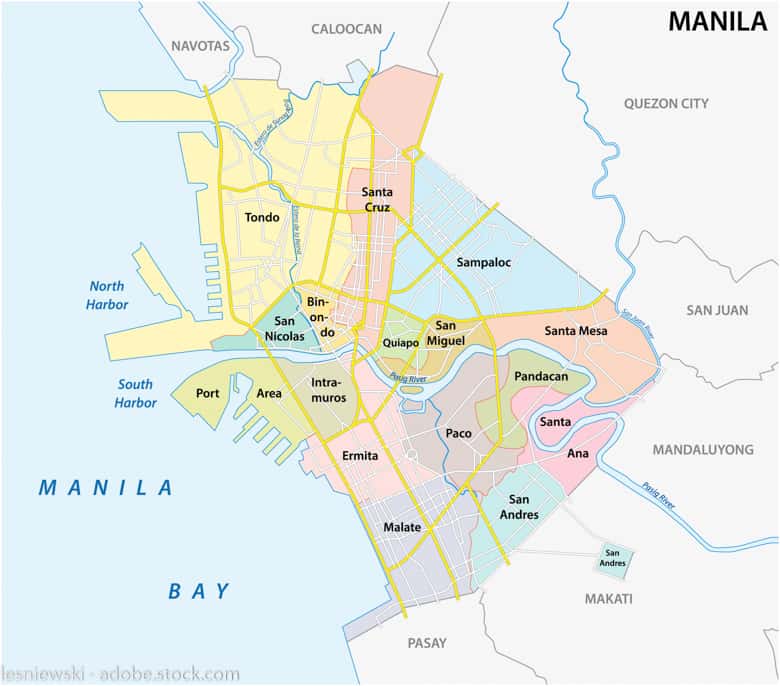
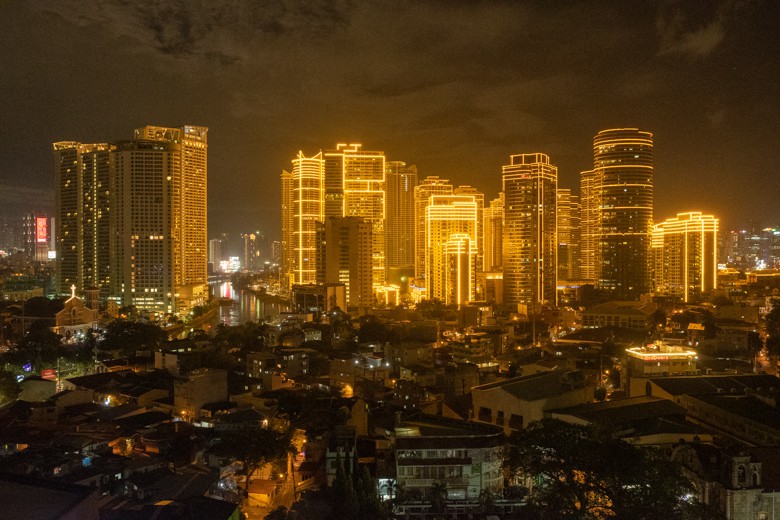
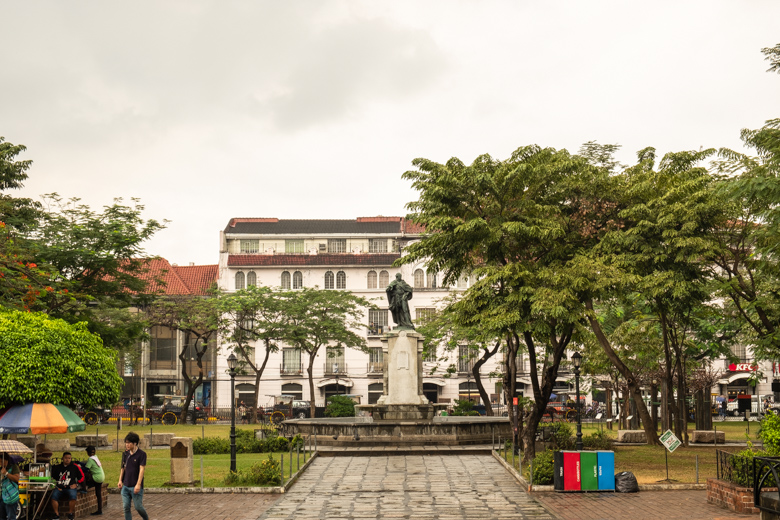


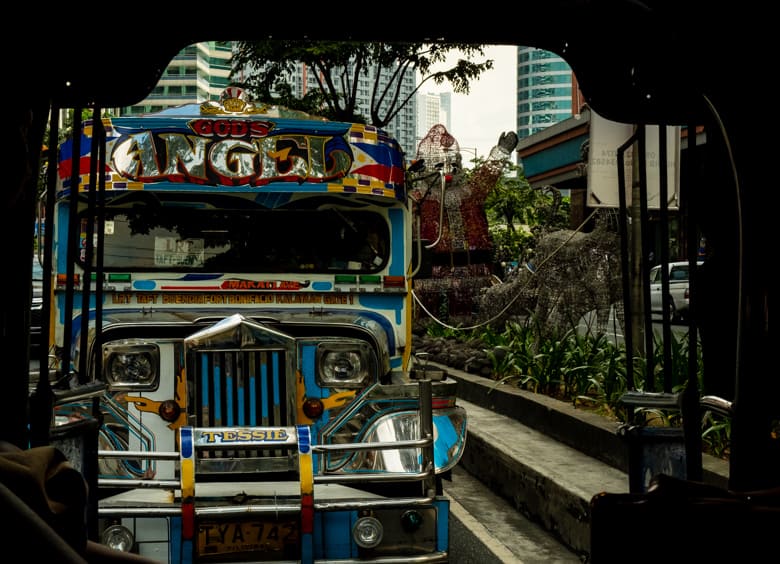











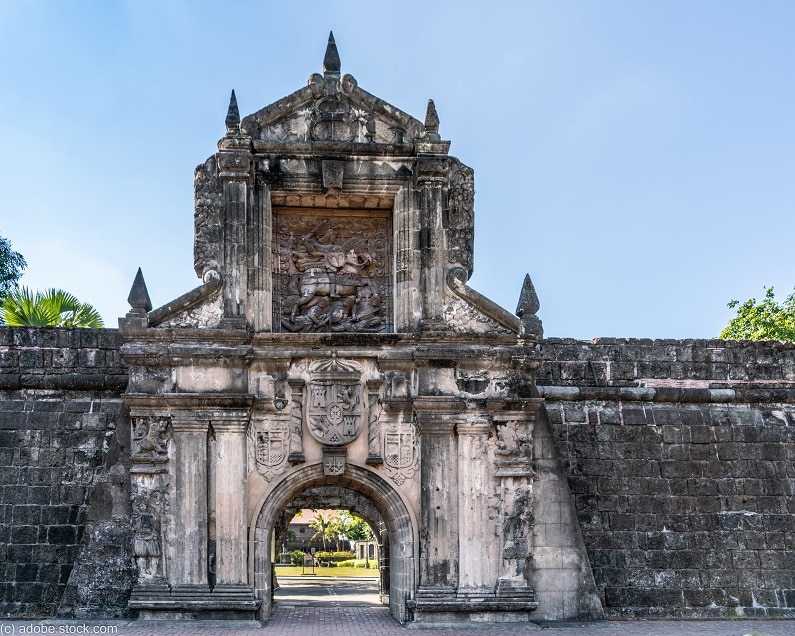











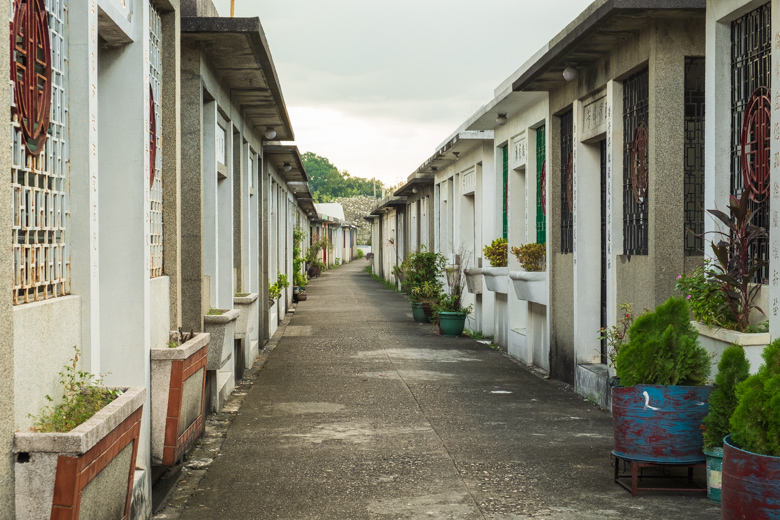

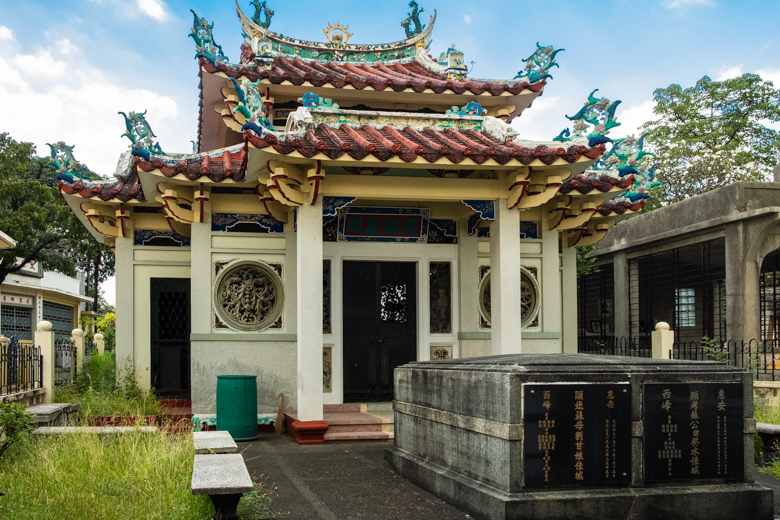

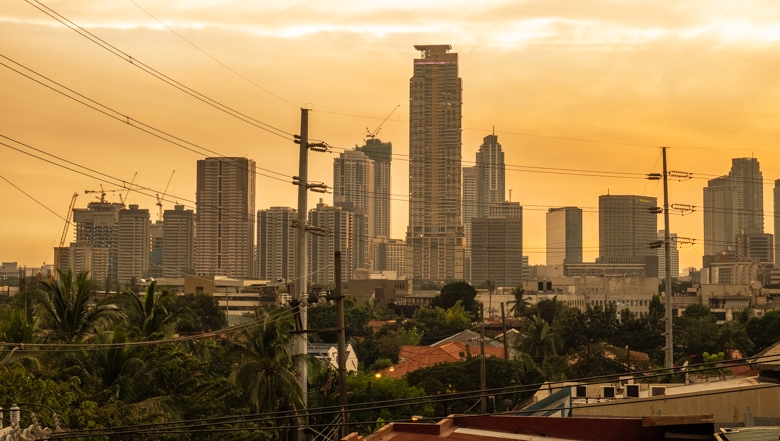









I very enjoy your informative descriptions so well accompanied by beautiful photos. Manila is definitely on my bucket list. Thanks!
Thank you!